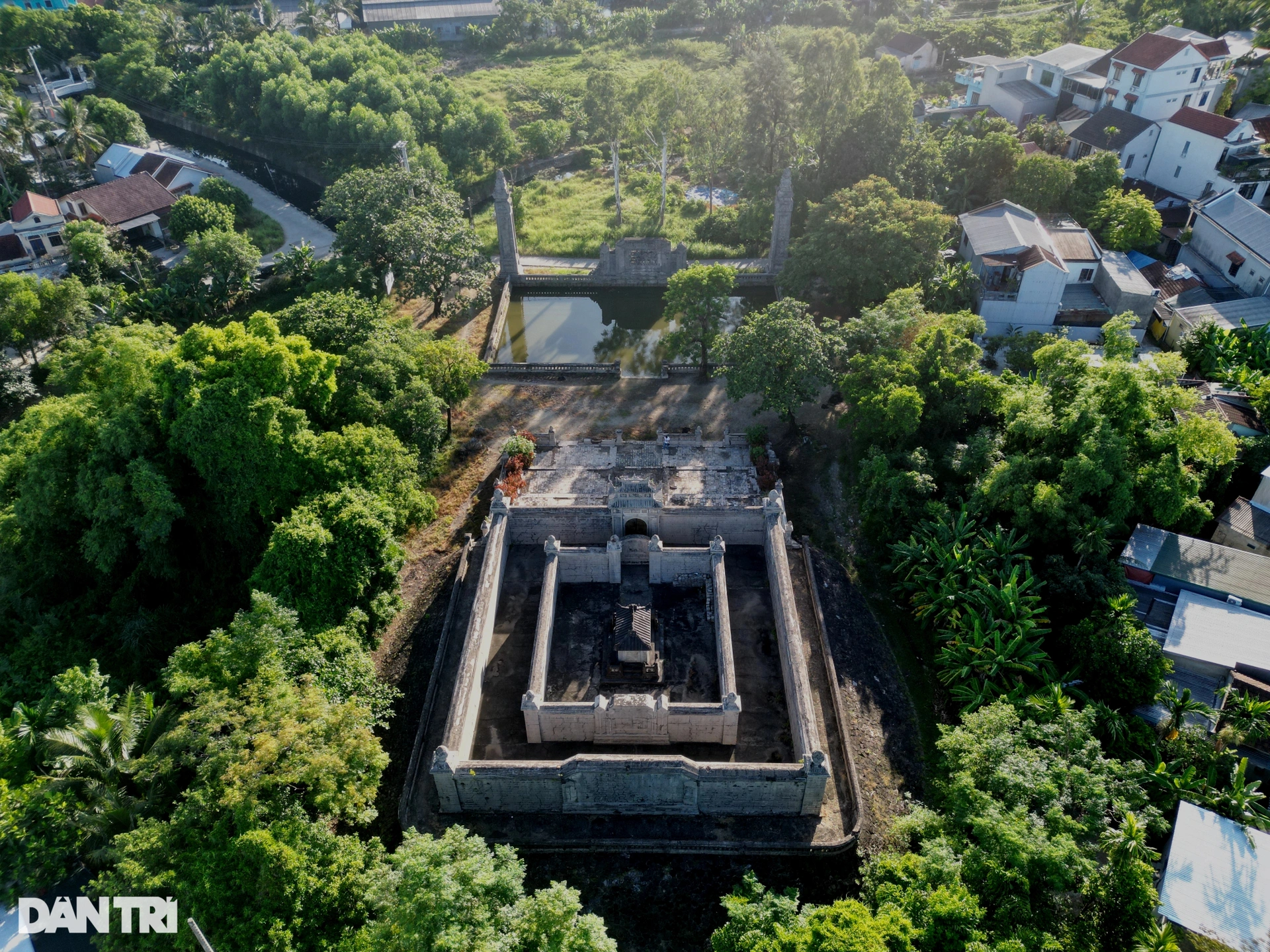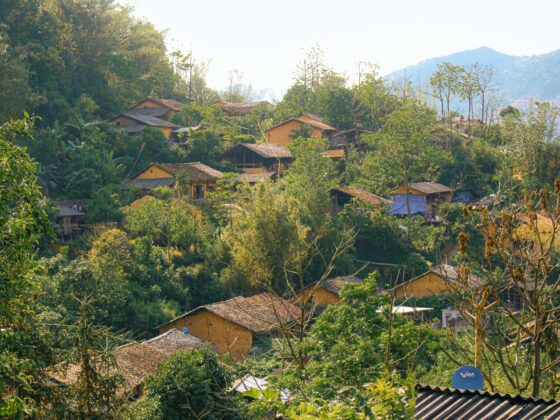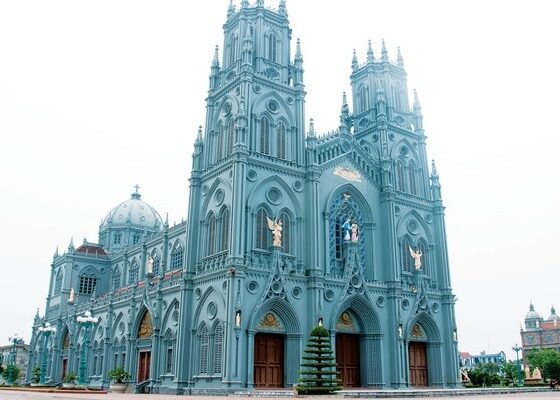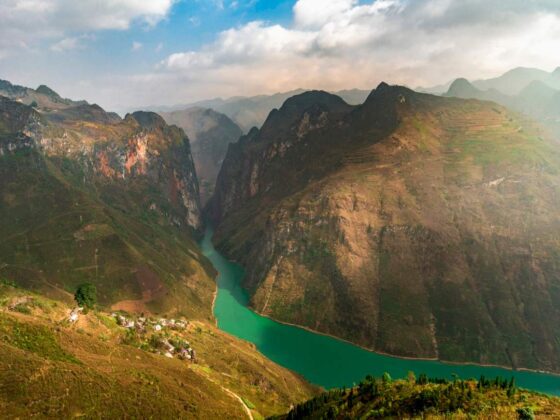Table of Contents Show
Throughout thousands of years of Vietnamese history, ancient monuments have stood as living witnesses to the nation’s resilience and enduring cultural values. Among them, the Thoai Thanh Royal Tomb in Hue holds a unique place — it is the resting place of Empress Dowager Hieu Khang Nguyen Thi Hoan, the mother of Emperor Gia Long, the founder of the Nguyen Dynasty.
Located within the Gia Long Tomb Complex, at the foot of Thien Tho Mountain in Dinh Mon, Huong Tra District, Thoai Thanh Tomb lies quietly amid pine-covered hills — solemn, serene, and steeped in echoes of a glorious imperial past.
Read more interesting posts here:
- Exploring Timeless Wonders: A Journey Through Sa Huỳnh Cultural Heritage
- A Visitor’s Guide to the Forgotten Nguyen Huu Hao Mausoleum in Da Lat
- A Complete Guide to Exploring 37 Khmer Temples in Tri Tôn District, An Giang
The Great Mother: The History of the Thoai Thanh Royal Tomb in Hue
![]()
Nguyen Thi Hoan, known posthumously as Empress Dowager Hieu Khang, was born in 1736. Gentle, wise, and deeply respected by her son, she played a pivotal role in shaping the spirit of Emperor Gia Long. She was not only the mother of an emperor but also his mentor and source of unwavering strength during the nation’s most turbulent years — a legacy now eternally honored at Thoai Thanh Royal Tomb in Hue.
Through wars, exiles, and battles for unification, her presence was a guiding light — a steady flame that illuminated Gia Long’s path from a fugitive prince to the founder of a dynasty. After ascending the throne, Emperor Gia Long honored his mother with the title of Empress Dowager and ordered the construction of Truong Tho Palace to express his filial devotion. When she passed away in 1811, she was buried at Thoai Thanh Royal Tomb in Hue, also known as Thoai Thanh Tomb, and posthumously bestowed with the noble title: “Y Tinh Hue Cung An Trinh Tu Hien Hieu Khang Hoang Hau.” Her ancestral tablet is enshrined alongside that of Emperor Gia Long’s father at Hung Mieu within the Imperial City, symbolizing the enduring gratitude of the Nguyen royal lineage.
Thoai Thanh Tomb – A Reflection of Nguyen-Era Architecture

Thoai Thanh Royal Tomb in Hue is not merely a burial site — it is a masterpiece of early Nguyen dynasty architecture, harmoniously blending spirituality and royal dignity. Facing south with Mount Re as its natural foreground, the complex consists of two main sections: the tomb area and the temple area, forming a tranquil yet majestic composition amidst nature.
The stone stairway leading from the courtyard to Thoai Thanh Royal Tomb in Hue is flanked by a pair of symmetrical dragon carvings, the timeless emblem of imperial power. Each scale and curve of these dragons is intricately sculpted — their coiling forms represent vitality and the eternal strength of the royal bloodline. Despite centuries of weathering and historical upheavals, the site retains its solemn beauty — a quiet testament to the dynasty’s once-golden glory.
A Simple Yet Sacred Resting Place
The Empress’s grave at Thoai Thanh Royal Tomb in Hue is built of stone — simple in design yet dignified in essence. In front stands a single monolithic altar stone, adorned with delicate geometric carvings. This restrained elegance mirrors the architectural philosophy of early Nguyen-era mausoleums: modesty, purity, and reverence over grandeur. Every detail embodies the solemn grace of a dynasty in its early days — a balance between imperial strength and maternal devotion.
The Journey of Heritage Restoration

In recent years, to preserve and revitalize this National Special Historical and Cultural Monument, the Thua Thien Hue authorities have invested more than 73 billion VND in restoration efforts. The project includes rebuilding foundations, surrounding walls, and signature decorative motifs.
This initiative not only safeguards a precious heritage site but also offers future generations a chance to reconnect with the Nguyen Dynasty’s cultural and historical legacy — a defining chapter of Vietnamese identity.
The Thoai Thanh Royal Tomb in Hue Complex is not just a memorial to Empress Dowager Hieu Khang, the first queen mother of the Nguyen Dynasty; it is also a monument to the era when the Nguyen Phuc royal family unified the nation. Every stone, carving, and dragon motif whispers tales of perseverance and imperial pride. Though time and war have eroded parts of its grandeur, what remains still carries the dignity and spirit of a golden age in Vietnamese history.
Explore Vietnam’s Heritage with ExoTrails
To explore historical landmarks like Thoai Thanh Royal Tomb in Hue and discover the scenic trails surrounding the Hue royal landscape, let ExoTrails be your guide. With over 4,500 destinations and routes across Vietnam, ExoTrails helps you navigate, plan your journey, and connect with a passionate community of explorers. Let your path toward Vietnam’s heritage be more fulfilling — one trail, one story, one legacy at a time.
Conclusion
In a city renowned for its magnificent imperial tombs, the Thoai Thanh Royal Tomb in Hue offers a unique and intimate glimpse into the origins of the Nguyen Dynasty. It is a place of quiet dignity, reflecting the deep filial piety of an emperor for his mother. For any traveler seeking a deeper connection to Vietnam’s history beyond the main tourist sites, this serene mausoleum is a truly special and unforgettable discovery.
Ready to discover more of Vietnam’s hidden gems? Join our vibrant community on Facebook to share your trekking stories and tips, and don’t forget to like the ExoTrails fanpage for the latest updates and exclusive offers!












